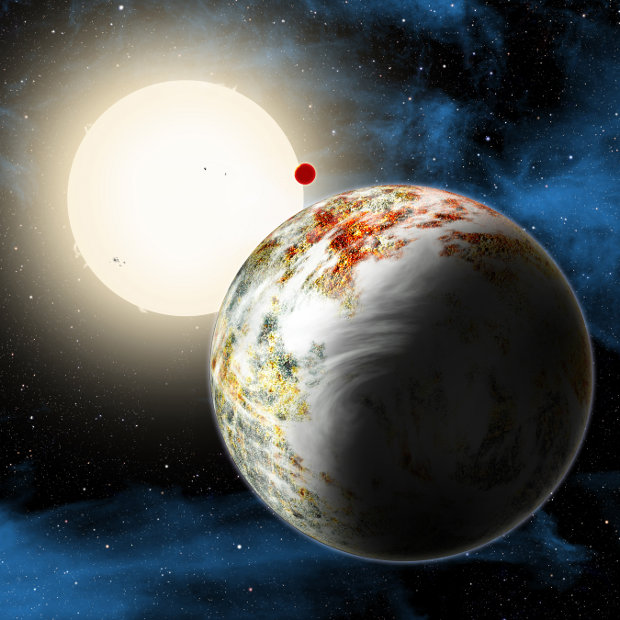
A team of astronomers led by Xavier Dumusque of the Harvard-Smithsonian CFA (Center for Astrophysics) has discovered a planet different from those found so far that has been called mega- Earth. It is a rocky planet that is much larger than astronomers had expected from a planet of this type. The planet Kepler- 10c has a size that is approximately 2.3 times that of Earth , but above all has a mass about 17 times greater.
The planet Kepler-10c was found in 2011 thanks to the observations of the Kepler space telescope. Its star, Kepler-10, has a mass slightly less than the Sun and has a distance of about 560 light years from Earth. Subsequently, it was examined with the HARPS-N (High Accuracy Radial velocity Planet Searcher for the Northern Emisphere) spectrograph, installed on the Telescopio Nazionale Galileo (TNG) of the Observatory of the Roque de Los Muchachos (island of La Palma, Canary Islands).
The diameter of the planet Kepler-10c was already assessed by the initial observations but the HARPS-N spectrograph allowed to carry out more in-depth analysis of its features. At that point, astronomers had a surprise because they realized that it was a rocky planet but much more massive than Earth.
Until now, super-Earth were found but no one expected to find a rocky planet of that size. Astronomers thought that it was a mini-Neptune, meaning a planet with a significant gaseous layer, instead they discovered that the planet Kepler-10c has a dense composition of rocks and other solid components.
Kepler-10c is a new type of planet, which was called mega-Earth. Its existence is even more unusual considering its age. The star system Kepler-10 is about 11 billion years old and that means it formed less than 3 billion years after the Big Bang. Initially, the universe contained only hydrogen and helium and only in time the first supernovae formed the other elements but this process required a few billion years.
When the star Kepler-10 and its planets formed, in theory there were not enough heavy elements to form rocky planets of that mass. However, observations show that this was possible. This means that even old stars may have planets with heavy elements which may have developed life forms. In short, it’s a really interesting surprise to scientists.
[ad name=”eBayUSUKAstronomy”]

